Study on Fracturing Parameters Optimization of Horizontal Wells in Low-Permeability Reservoirs in South China Sea
Abstract
:1. Introduction
2. Evaluation of Compressibility of H Field
2.1. Geological Background
2.2. Geological Characteristics of H Oilfields
2.3. Rock Mechanics Characteristics
2.4. Rock Mineral Characteristics
2.5. Testing of Exploration
3. Research on Optimization of Fracturing Parameters
3.1. Fracture Parameter Optimization
3.2. Optimization of Treatment Parameters
4. Comparison of Optimization Results and On-Site Application
5. Conclusions
- The Buried Hill Formation is a typical tight formation with low permeability and low porosity. The lithology of the formation is complex, which results in an uneven distribution of reservoir minerals. The content of brittle minerals such as quartz is high, and the brittleness index ranges from 41.0% to 65.6%. Considering the development of natural fractures in this area, it has the conditions to form complex fractures after fracturing.
- In the development process of the H oilfield in the South China Sea, it is recommended to adopt the network fracturing technique with a “high slurry rate + slickwater” concept, aiming to maximize the communication between artificial fractures and natural fractures.
- There is a reasonable match relationship between the number of fracturing stages and fracture half-length. The recommended number of frac stages is 6, the fracture length is 120 m, the pump rate is 6–8 m3/min, the sands scale of a single stage is about 50 m3, and the liquid volume is about 700 m3.
- According to the reservoir characteristics of the H oilfield in the South China Sea and the special type of offshore pipe column, it is recommended to use slickwater to increase the rate as well as simulated optimization of the liquid strength and sand strength for different fracturing stages.
Author Contributions
Funding
Data Availability Statement
Conflicts of Interest
References
- Xu, W.; Xiao, M.; Sun, X.; Wang, Y.; Jia, Y.; Jiang, A.; Du, J.; Jiang, W. Pilot test of multi-stage fracturing technology for horizontal wells in offshore low permeability reservoirs. China Offshore Oil Gas 2017, 29, 108–114. [Google Scholar]
- Shi, R. Exploration and application of fracturing reconstruction technique for low porosity and low permeability reservoirs in Xihu sag. China Offshore Oil Gas 2013, 25, 79–82. [Google Scholar]
- Zou, X.; Liu, S.; Jiang, R.; Yang, G.; Duan, Z.; Kuang, L.; Sun, L.; Li, X. Feasibility analysis of application of hydrodynamic fracturing technology in offshore oil fields. Drill. Prod. Technol. 2021, 44, 60–63. [Google Scholar]
- Yao, F.; Cao, B.; Wang, S.; Hu, Z.; Xia, Y.; Tang, L. Application of secondary sand fracturing technique in offshore low porosity and permeability sandstone gas reservoir. Sci. Technol. Eng. 2020, 20, 5615–5621. [Google Scholar]
- Wu, B.; Yang, K.; Cheng, Y.; Liu, S.; Zhang, Y. Experimental Study of Proppant Conductivity in Low Permeability Reservoirs in the South China Sea. Pet. Drill. Technol. 2021, 49, 86–92. [Google Scholar]
- Lin, S.; Lu, Y.; Liu, Z.; Lu, W.; Hu, P. Novel Water-Based Mud for Low-Permeable Reservoir in South China Sea. Energies 2023, 16, 1738. [Google Scholar] [CrossRef]
- Donghong, L.; Zhenghe, Y.; Xiaofei, G.; Zhihua, R.; Yu, D.D.; Halomoan, P.M.; Bisain, A.S.; Yang, L.; Azwar, O. Unlocking the Potential of Complex Marginal Reservoir in Highly Mature Oil Field, XiJiang24 South China Sea. Presented at the International Petroleum Technology Conference, Beijing, China, 26–28 March 2013. [Google Scholar] [CrossRef]
- Li, F.; Cao, W.; Sun, Y.; Chen, K.; Jiang, H.; Li, S. Application of deflagration fracturing technology to multi-layer combined production in offshore directional wells. Fault-Block Oil Gas Field 2022, 29, 285–288. [Google Scholar]
- Sun, L.; Yang, W.; Li, X.; Xiong, P. Research and Field Test of Deflagration Fracturing Technology in Offshore Oilfields. Pet. Drill. Technol. 2019, 47, 91–96. [Google Scholar]
- Che, M.; Wang, M.; Wang, Y.; Song, Y.; He, F.; Dong, K.; Ruan, F. Optimization of Fracturing Parameters of Horizontal Wells in Weiyuan Shale Gas Field. J. Xi’an Shiyou Univ. Nat. Sci. Ed. 2022, 37, 53–58. [Google Scholar]
- Yang, H.; Li, X.; Chen, X.; Chen, X.; Liu, P.; Feng, Q.; Geng, S. Study on staged optimization method of staged fracturing for horizontal wells in low permeability gas reservoir. Spec. Oil Gas Reserv. 2021, 28, 125–129. [Google Scholar]
- Wang, H.; Jiang, T.; Li, Y.; Bian, X.; Hua, J. Method for Fracturing Stage and Cluster Optimization in Shale Gas Horizontal Well. Xinjiang Pet. Geol. 2016, 37, 218–221. [Google Scholar]
- Lei, Q.; Weng, D.W.; Guan, B.S.; Mu, L.; Xu, Y.; Wang, Z.; Guo, Y.; Li, S. A novel approach of tight oil reservoirs stimulation based on fracture controlling optimization and design. Pet. Explor. Dev. 2020, 47, 592–599. [Google Scholar] [CrossRef]
- Luo, Q.-Y.; Xie, M.-Y.; Huang, Y.-J.; Duan, R.; Jiang, J.-C. Application of Embedded Discrete Fractures in Offshore Low Permeability Oil Field Fracturing Simulation. In Proceedings of the International Field Exploration and Development Conference, Xinjiang, China, 16–18 August 2022; pp. 2159–2171. [Google Scholar] [CrossRef]
- Yu, W.; Hu, X.; Wu, K.; Sepehrnoori, K.; Olson, J.E. Coupled fracture-propagation and semianalytical models to optimize shale gas production. SPE Reserv. Eval. Eng. 2017, 20, 1004–1019. [Google Scholar] [CrossRef]
- Li, L.Z.; Zhou, F.J.; Wang, B. Method investigation on intelligent optimization of high dimension HWMHF parameters. Pet. Sci. Bull. 2023, 8, 347–359. [Google Scholar]
- Wang, S.; Chen, S. Integrated well placement and fracture design optimization for multi-well pad development in tight oil reservoirs. Comput. Geosci. 2019, 23, 471–493. [Google Scholar] [CrossRef]
- Rahmanifard, H.; Plaksina, T. Application of fast analytical approach and AI optimization techniques to hydraulic fracture stage placement in shale gas reservoirs. J. Nat. Gas Sci. Eng. 2018, 52, 367–378. [Google Scholar] [CrossRef]
- Nejad, A.M.; Shelley, R.F.; Lehman, L.V.; Shah, K.; Gusain, D.; Conway, M.T. Development of the Brittle Shale Fracture Network Model. Presented at the SPE Hydraulic Fracturing Technology Conference, The Woodlands, TX, USA, 6–8 February 2013. [Google Scholar]
- Klingensmith, B.C.; Hossaini, M.; Fleenor, S. Considering far-field fracture connectivity in stimulation treatment designs in the Permian Basin. Presented at the SPE/AAPG/SEG Unconventional Resources Technology Conference, San Antonio, TX, USA, 20–22 July 2015. [Google Scholar]
- Zhao, Z.; Zhang, C.; Xu, G.; Li, X.; Li, S.; Shi, W.; Chi, H. Optimized design and application of fracturing string for offshore low porosity and low permeability reservoirs. China Offshore Oil Gas 2013, 25, 83–86. [Google Scholar]
- Chen, Z.; Wang, Z.; Zeng, H. Status quo and prospect of staged fracturing technique in horizontal wells. Nat. Gas Ind. 2007, 27, 78. [Google Scholar]
- Rickman, R.; Mullen, M.J.; Petre, J.E.; Grieser, W.V.; Kundert, D. A Practical Use of Shale Petrophysics for Stimulation Design Optimization: All Shale Plays are not Clones of the Barnett Shale. In Proceedings of the SPE Annual Technical Conference and Exhibition, Denver, CO, USA, 21–24 September 2008. [Google Scholar]
- Yagiz, S. Assessment of Brittleness Using Rock Strength and Density with Punch Penetration Test. Tunneling Undergr. Space Technol. 2009, 24, 66–74. [Google Scholar] [CrossRef]
- Yuan, J.; Deng, J.; Zhang, D.; Li, D.; Yan, W.; Chen, C.; Cheng, L.; Chen, Z. Fracability evaluation of shale gas reservoirs. Acta Pet. Sin. 2013, 34, 523–527. [Google Scholar]
- Altindag, R. Assessment of Some Brittleness Indexes in Rock Drilling Efficiency. Rock Mech. Rock Eng. 2010, 43, 361–370. [Google Scholar] [CrossRef]
- Jarvie, D.M.; Hill, R.J.; Ruble, T.E.; Pollastro, R.M. Unconventional Shale Gas Systems: The Mississippian Barnett Shale of North Central Texas as One Model for Thermogenic Shale Gas Assessment. AAPG Bull. 2007, 91, 475–479. [Google Scholar] [CrossRef]
- Olson, J.E.; Taleghani, A.D. Modeling Simultaneous Growth of Multiple Hydraulic Fractures and Their Interaction with Natural Fractures. Presented at the SPE Hydraulic Fracturing Technology Conference, The Woodlands, TX, USA, 19–21 January 2009; pp. 726–732. [Google Scholar] [CrossRef]


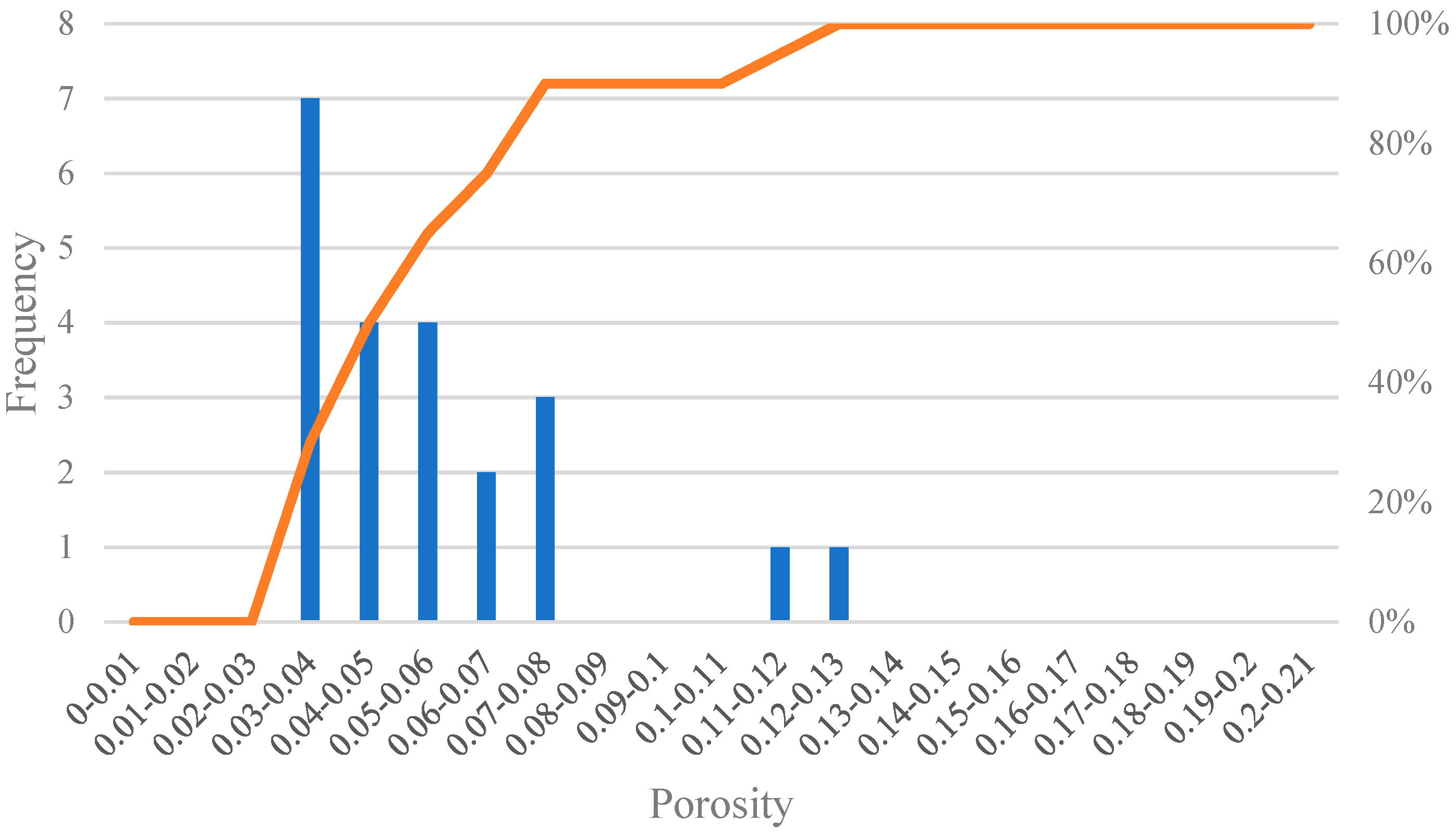
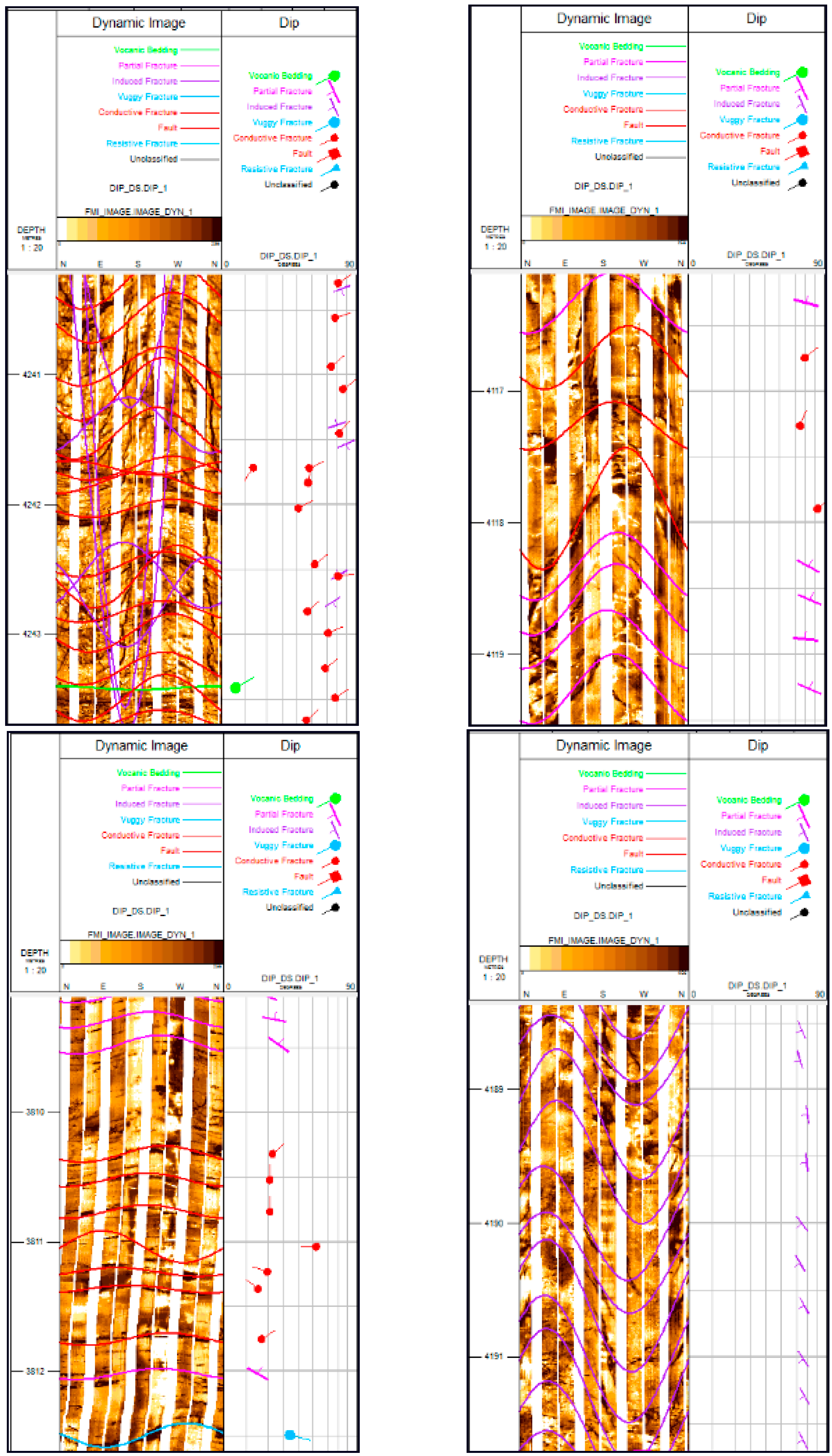

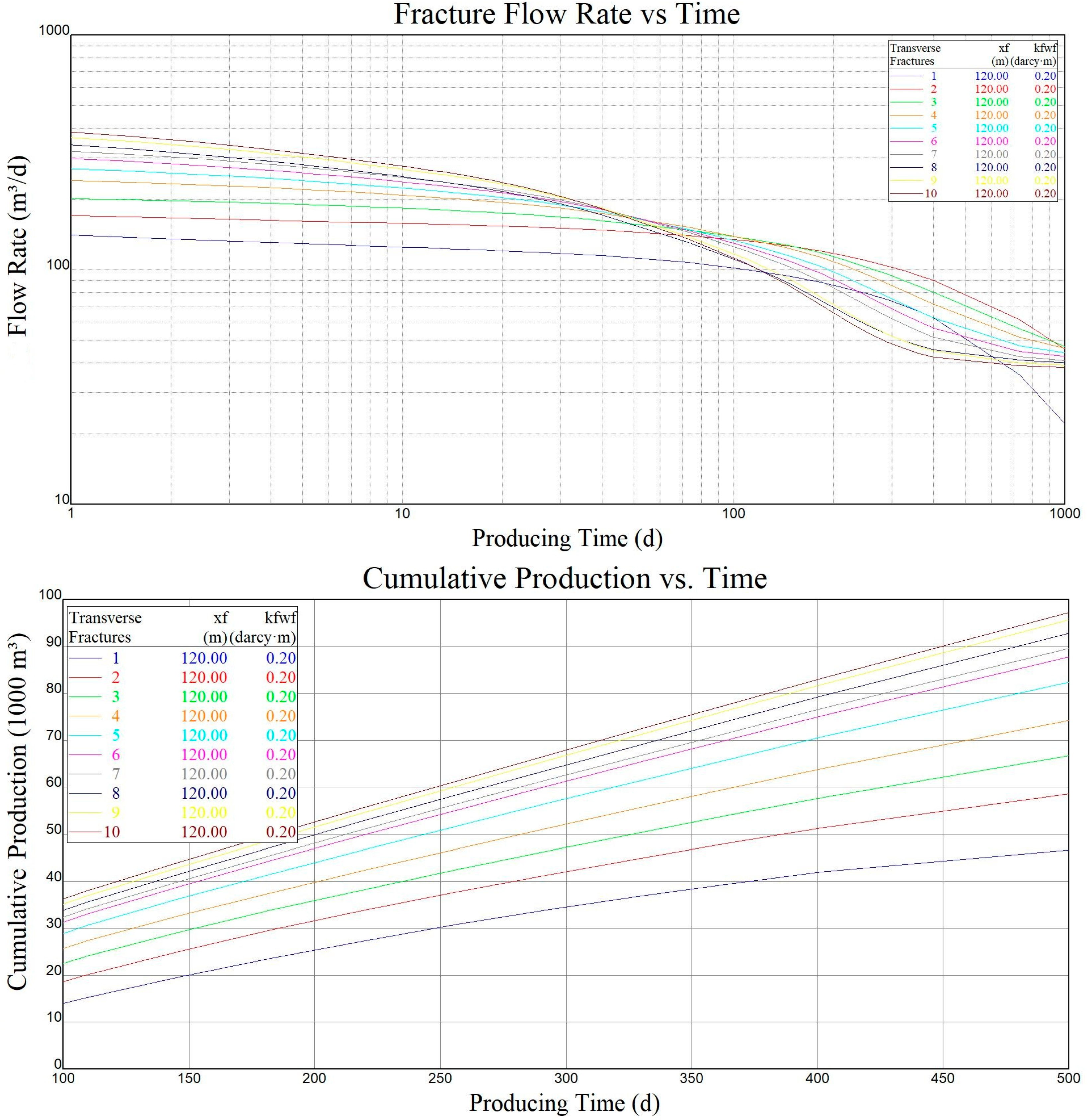


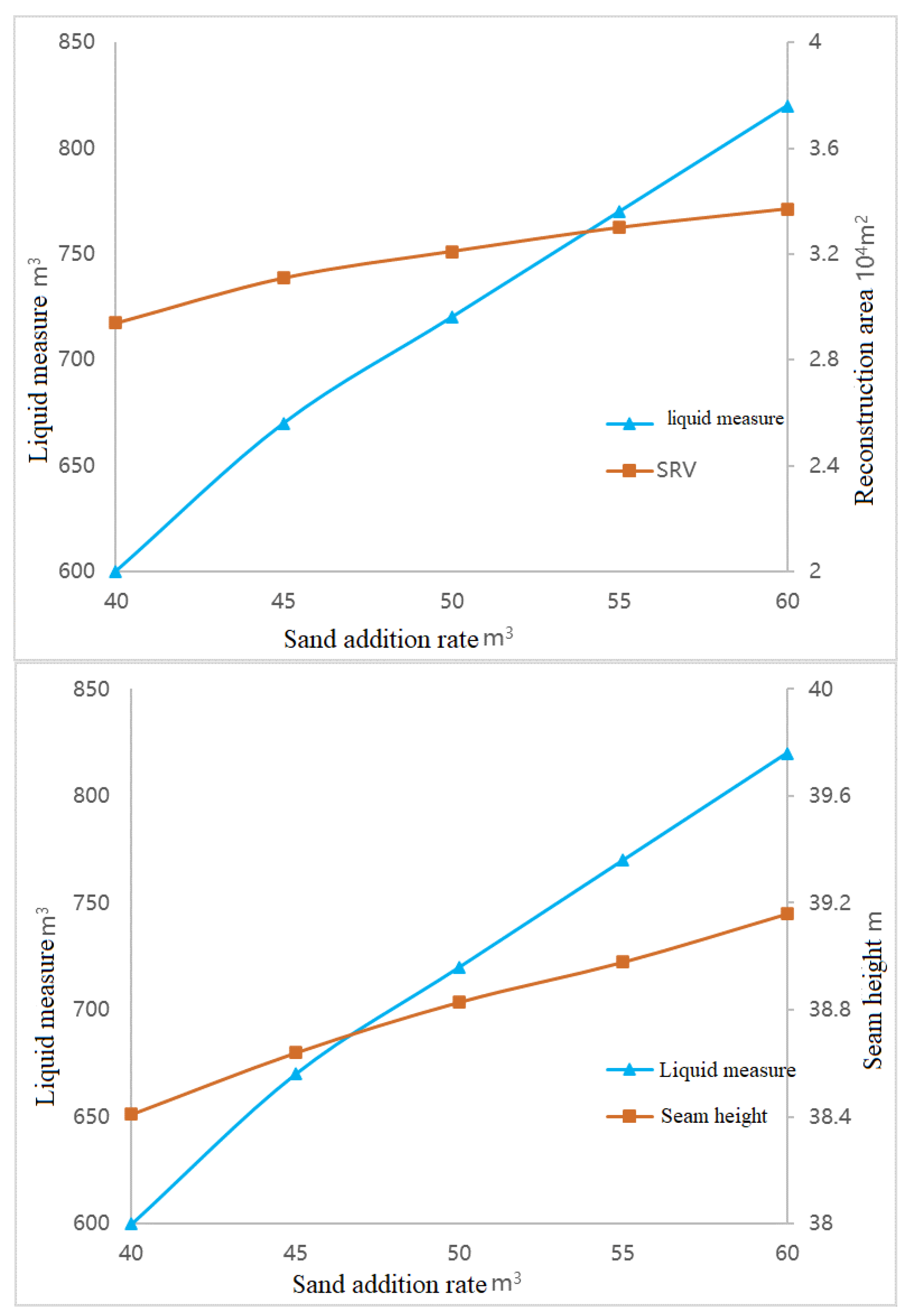
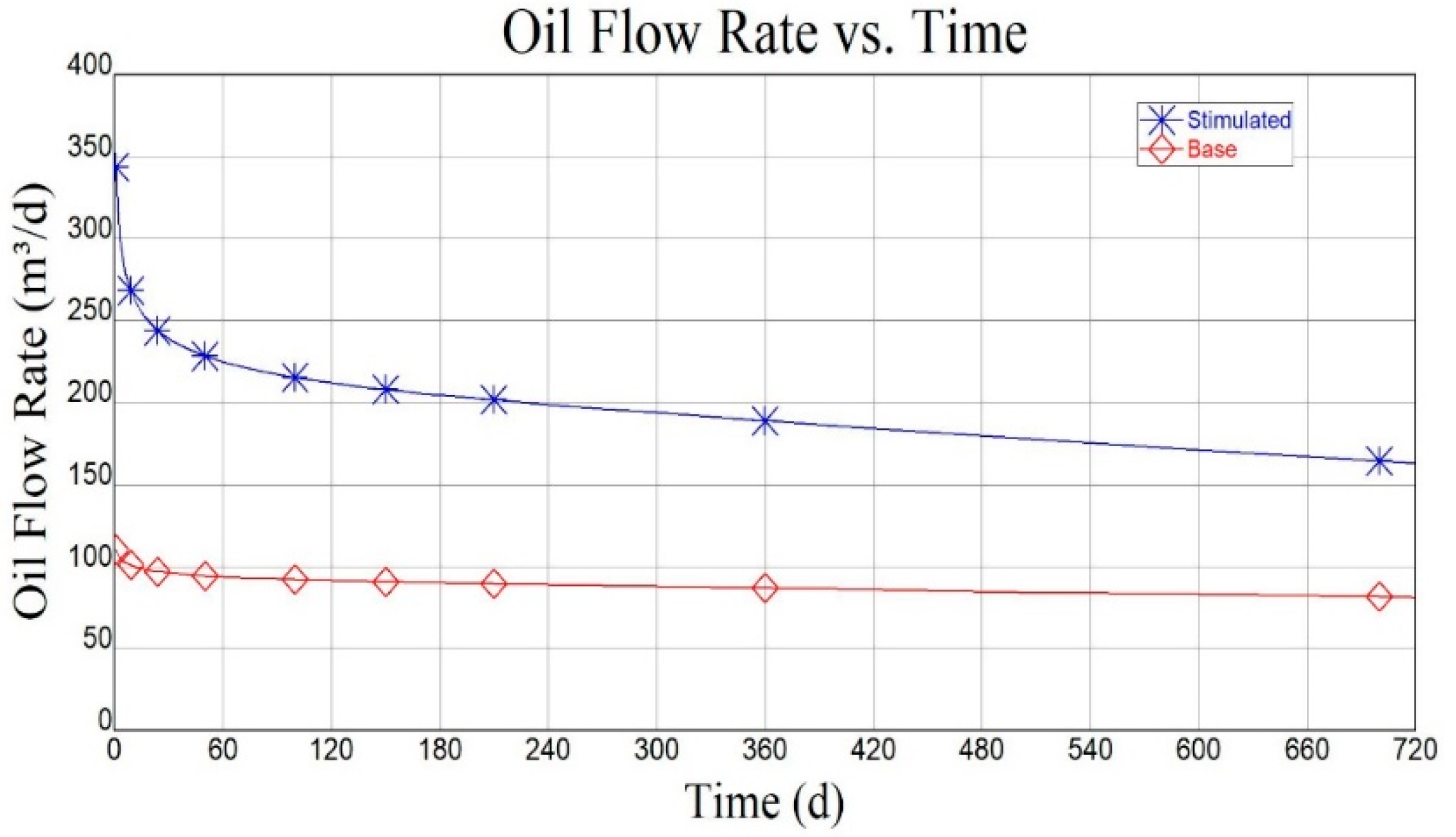

| Well | Well Depth | Confining Pressure MPa | Density g/cm3 | Elastic Modulus GPa | Poisson Ratio | Compressive Strength MPa | Internal Friction Angle ° | Cohesion MPa |
|---|---|---|---|---|---|---|---|---|
| H-7 | 4156.5 | 40 | 2.38 | 9.19 | 0.30 | 95.45 | 26.38 | 16.51 |
| 50 | 2.38 | 11.00 | 0.23 | 106.29 | ||||
| 60 | 2.38 | 12.09 | 0.32 | 116.88 |
| Number | Ingredients (%) | ||||||||
|---|---|---|---|---|---|---|---|---|---|
| Quartz | Potassium Feldspar | Plagioclase | Calcite | Pyrite | Dolomite | Laumontite | Clay | BI | |
| 1 | 58.1 | 12.7 | 5.9 | 4.8 | 0.3 | 0 | 0 | 18.2 | 63.2 |
| 2 | 55.6 | 13.4 | 4.7 | 3.9 | 0.3 | 0 | 0 | 22.1 | 59.8 |
| 3 | 61.2 | 10.3 | 5.8 | 4.2 | 0.2 | 0 | 0 | 18.3 | 65.6 |
| 4 | 47.0 | 17.0 | 5.0 | 0 | 0 | 7.0 | 0 | 24.0 | 54.0 |
| 5 | 37.5 | 21.4 | 30.0 | 2.2 | 0.3 | 3.4 | 4.5 | 0.7 | 43.4 |
| 6 | 44.0 | 17.0 | 33.0 | 0 | 0 | 4.0 | 0 | 2.0 | 48.0 |
| 7 | 32.0 | 16.0 | 29.0 | 5.0 | 0 | 4.0 | 0 | 14.0 | 41.0 |
| Slurry Rate (m3/min) | Head of Liquid (MPa) | Pipe Friction under Guar (MPa) | Predicting Pressure under Guar (MPa) | Pipe Friction under Slickwater (MPa) | Predicting Pressure under Slickwater (MPa) |
|---|---|---|---|---|---|
| 4 | 41.5 | 23.70 | 63.64 | 18.20 | 58.14 |
| 6 | 41.5 | 38.50 | 78.44 | 31.63 | 67.01 |
| 8 | 41.5 | 55.86 | 95.79 | 47.05 | 82.43 |
| 10 | 41.5 | 75.76 | 115.70 | 64.00 | 99.38 |
| 12 | 41.5 | 98.28 | 138.22 | 82.27 | 117.65 |
| Fracturing String | Length of Horizontal Section (m) | Stage Number | Rate (m3/min) | Sands (m3) | Fluids (m3) |
|---|---|---|---|---|---|
| 31/2″ + 41/2″ | 656 | 6 | 6.0~8.0 | 50 | 700 |
Disclaimer/Publisher’s Note: The statements, opinions and data contained in all publications are solely those of the individual author(s) and contributor(s) and not of MDPI and/or the editor(s). MDPI and/or the editor(s) disclaim responsibility for any injury to people or property resulting from any ideas, methods, instructions or products referred to in the content. |
© 2023 by the authors. Licensee MDPI, Basel, Switzerland. This article is an open access article distributed under the terms and conditions of the Creative Commons Attribution (CC BY) license (https://creativecommons.org/licenses/by/4.0/).
Share and Cite
Wu, B.; Wu, G.; Wang, L.; Lou, Y.; Liu, S.; Yin, B.; Li, S. Study on Fracturing Parameters Optimization of Horizontal Wells in Low-Permeability Reservoirs in South China Sea. Processes 2023, 11, 2999. https://doi.org/10.3390/pr11102999
Wu B, Wu G, Wang L, Lou Y, Liu S, Yin B, Li S. Study on Fracturing Parameters Optimization of Horizontal Wells in Low-Permeability Reservoirs in South China Sea. Processes. 2023; 11(10):2999. https://doi.org/10.3390/pr11102999
Chicago/Turabian StyleWu, Bailie, Guangai Wu, Li Wang, Yishan Lou, Shanyong Liu, Biao Yin, and Shuaizhen Li. 2023. "Study on Fracturing Parameters Optimization of Horizontal Wells in Low-Permeability Reservoirs in South China Sea" Processes 11, no. 10: 2999. https://doi.org/10.3390/pr11102999






